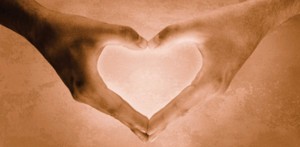By JoAnn Rahl, BCSI –


What is Visceral Manipulation?
The viscera are all the internal organs, such as the heart and lungs, residing in the cavities of the body, namely the chest, abdomen and pelvis. Visceral Manipulation is a manual body therapy in which the practitioner uses gentle but relatively deep touch to release tension in the ligaments of the organs of the body with the goal of enhanced organ movement and health. Common wisdom accepts that the muscles and fascia (connective tissue) need to contract and expand smoothly without excessive adhesions (knots) for optimal physical health. When we get a cramp in our calf, most of us instinctively rub it or slowly walk to “work out the knot.” Because the adhesion hurts, it gets our attention. We have learned that a cramp or knot restricts blood flow to and from the muscle; blood flow carries all the nutrients the muscle needs to stay healthy. The viscera have a similar need for smooth movement.
As we walk, or when we move from sitting to standing, turn in our chairs and even roll over in bed, our internal organs are moving. Dr. Jean-Pierre Barral, a French Osteopath, has stated “in a single day, your internal organs move 30,000 times, your liver alone travels 600 meters.” Ideally, all of our internal organs, our hearts, livers, kidneys etc… should be smoothly sliding (traveling) on or alongside all of the structures they are attached to. The question remains, is the movement occurring easily and effortlessly, or are our organs excessively adhered to nearby structures creating irritation and inflammation?
Encouraging Ease and Movement of Internal Organs
The average heart beats 100,800 times a day, expanding and contracting to send the blood out over 60,000 miles of vessels. The less internal tension on the heart the easier its job is of pumping blood. The pericardium is a membranous sac that wraps around the heart, the roots of the aorta and other large blood vessels. What holds or suspends the pericardium, and therefore the heart, in place is ligaments. There are ligaments on the back side of the heart that attach to the vertebrae of the spine and ligaments on the front side of the heart that attach to the breast bone. Just as in the preceding example of the calf cramp in which our goal was to release the adhesion, it is in the best interest of the heart to ensure freedom of movement within the chest cavity
Visceral Manipulation works manually with these most internal of ligaments to encourage ease of movement and proper placement of the organs. Structural Integration is a form of bodywork that compliments the visceral work and can mobilize the posterior portions of the vertebrae of the spine which affect the movement on the posterior side of the heart. It can also can directly address the intercostal muscles of the ribcage allowing for greater side to side movement of the ribs which also give the heart more room to move.
Not only is the heart suspended by ligaments but it is seated on, as some would say, the primary muscle of inspiration, the diaphragm. It is surrounded by the lungs and protected by the rib cage. Every time we take a full chest or belly breath, the heart is being massaged by the lungs and diaphragm. Conversely, if our breathing capacity has been restricted, for example, by a compromised slumped posture or a traumatic injury like whiplash, in which neck placement affects torsion on the heart, everything from the outside, such as the rib cage to our inside, such as our heart is being unnecessarily compressed and strained. Most of us are familiar with the beat of our own heart but what I am suggesting we now become attuned to is the breath of our heart. You may see this as a metaphor but I am suggesting a literal kinesthetic experience. If you’re curious as to what this might feel like you can try the following visualization and meditation exercise.
Visualization and Meditation Exercise
Create a quiet time in your schedule where you won’t be disturbed for a few minutes. Close your eyes and begin to focus on your breath. Imagine as you breathe in and out instead of the air coming in through your nose or mouth you are inhaling in through the back of your heart and exhaling out the front. I know it’s not logical but sometimes the best things in life are illogical gifts born of unusual perspective. As this movement of your heart, mind and breath becomes comfortable to you, try a variation of breathing in from the bottom of your heart and out the top of your heart. When this feels easy, allow your mind to imagine breathing in from the ribs on the right side under your arm and out of the ribs on the left side under your left arm. Remember, there are lungs underneath the ribs which could be moving if asked to. The idea is to think and feel in new ways about your breath, your heart, your whole body. When you take a full deep breath, your heart is being “breathed” by your lungs, your diaphragm, your ribs and even your spine. As we learn to breathe into and out of every side of our heart, our entire being benefits. Who knows what other wonderful miracles may follow?
CONSCIOUS POSTURE
JoAnn Rahl, BCSI
239-777-2597 www.consciousposture.net
 Southwest Florida's Health and Wellness Magazine Health and Wellness Articles
Southwest Florida's Health and Wellness Magazine Health and Wellness Articles
